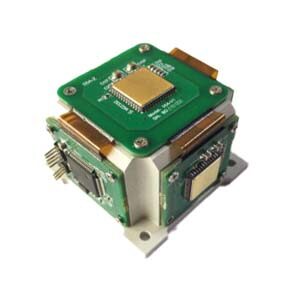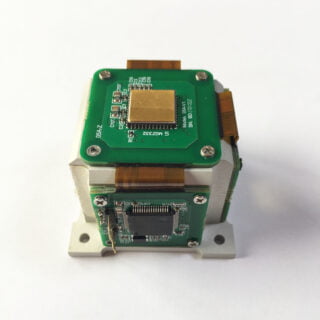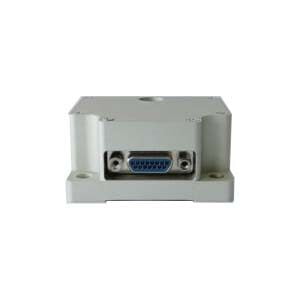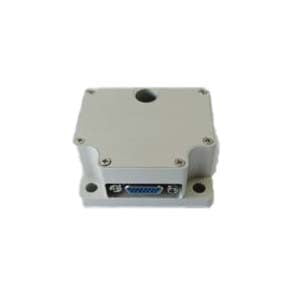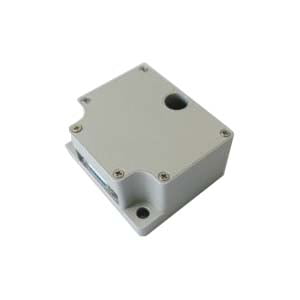The advancement of my country's geostationary satellite technology has made satellite communication resources more and more abundant and diverse. The development of the Internet has also made big data and the Internet of Things widely used. The ocean communication network that cannot be realized by the ground wired base station communication mode must be realized through satellite communication. Therefore, the demand for shipboard communication equipment to be instantly accessible has also been greatly released. The inertial measurement unit based on the microelectronic system is the core component of the shipborne communication-in-motion antenna system and is the key to ensuring stable tracking of communication-in-motion equipment. Generally, the inertial measurement unit uses the Kalman filter method to fuse the three-axis measured angular velocity and the three-axis measured acceleration information to obtain relatively accurate dynamic attitude information of the market. However, in the actual dynamic use process, only the market information obtained through this method is The effect of applying to ship roll isolation is not ideal. It is proved by mechanism analysis and large amounts of data collection. This is due to the measurement information deviation caused by the three-axis measurement acceleration being contaminated by other accelerations when the measurement unit moves in space. In order to facilitate the distinction, This type of acceleration that affects attitude measurement is collectively called harmful acceleration. This article will analyze the causes of harmful acceleration and its impact on measuring carrier attitude Euler angle information, and propose a filtering method for harmful acceleration, which further improves the accuracy of microelectronic sensors in measuring carrier attitude information. This filtering method can be expanded to be applied to a variety of devices with interference information, especially providing convenience for the promotion and application of mobile communication series products and similar devices.
1. Kalman filter method
In order to understand how harmful acceleration affects the attitude measurement information of the inertial measurement unit, we must first understand the basic algorithm of the attitude measurement of the inertial measurement unit, namely the Kalman filter method. The principle of the Kalman filter method is to obtain the original measurement data in a probabilistic sense through multi-channel sensor measurement when the noise status of each measurement plan is known in advance. In order to cooperate with the application of Kalman filtering method, it is necessary to construct other carrier attitude measurement channels different from the direct measurement channel. Angular velocity meters and accelerometers are respectively installed on the three sign vectors of the inertial measurement unit: The actual measured attitude obtains low-noise, high-precision attitude information in a probabilistic sense, thereby obtaining accurate filtering results. The Kalman filtering process can be divided into 5 steps:
(1)The attitude estimation is set at time T, that is, when there is no carrier attitude measurement information, the attitude information estimation is obtained by the state equation operation of the attitude rotation quaternion:
![]()
(2)One-step prediction error variance matrix:
![]()
(3)Filter gain matrix:
![]()
(4)State matrix estimation:
![]()
(5)Estimated error variance matrix:
![]()
After the above five steps, the carrier attitude information expressed in the form of quaternions processed by the Kalman filter method can be accurately obtained, and then the rotation matrix and attitude Euler angle information can be obtained.
2.Harmful acceleration analysis
The inertial measurement unit (conventional strapdown inertial navigation) based on the measurement principle of three-axis angular velocity and three-axis acceleration uses the Kalman filter method to fuse the rotating eccentric attitude integral matrix with the measured gravity acceleration vector scalar data to obtain high maneuverability dynamic posture information. Since the attitude information is based on the gravity acceleration vector scalar information of the three-axis acceleration measurement, the accuracy and stability of the gravity acceleration of the three-axis acceleration measurement are an important basis for the accuracy and stability of the attitude information of the inertial measurement unit. But in actual use. The spatial motion of the inertial measurement unit is not a rational rotation of the center of mass. In the earth's inertial system, changes in the magnitude and direction of its spatial motion speed will also produce acceleration. Therefore, in addition to the acceleration due to gravity, triaxial acceleration will also measure other accelerations due to changes in space motion. The participation of these accelerations will interfere with attitude convergence and affect the accuracy of attitude information. During the attitude convergence calculation process, they are collectively called harmful accelerations.
During the use of shipboard mobile communication, the inertial measurement unit must participate in space motion. As long as the form of motion changes, there will be harmful acceleration mixed in the measured gravity acceleration data to interfere with the attitude convergence calculation. For the convenience of analysis, harmful acceleration is now divided into two categories according to its mode of action. One type of harmful acceleration is relatively stationary relative to the geodetic system, such as the linear motion acceleration of the carrier in space. This type of acceleration is relatively stationary in space with the acceleration of gravity, and its effect does not affect the attitude change of the inertial measurement unit. Therefore, the measurement information of the three-axis angular velocity and the three-axis acceleration cannot be separated, that is, it is objectively uncontrollable. Fortunately, this kind of harmful acceleration occurs instantaneously during the actual use of the shipboard communication system and its value is not large. Its interference can be reduced through appropriate Kalman filter coefficients. Another type of harmful acceleration is relatively stationary relative to the measurement coefficient of the inertial measurement unit, such as normal acceleration and tangential acceleration during ship rolling. This kind of acceleration continues to periodically interfere with the measurement data during the ship rolling process, affects the Kalman filter convergence process, and is an important factor affecting the dynamic data of the inertial measurement unit. In order to improve system performance and reduce costs, such harmful acceleration needs to be measured from three-axis acceleration

It can be seen that when the rotation radius of the instantaneous measurement system is known, the harmful acceleration can be separated from the measurement information of the three-axis acceleration through the three-dimensional angular velocity information, so as to achieve the purpose of filtering out such harmful acceleration.
However, in practical applications, the rotation radius of the roll and pitch measurement systems is related to the installation height of the ship's moving centerline and the hull draft, and the rotation radius of the yaw angle is related to the motion radius. Therefore, the rotation radius of the measurement system is not applicable. Obtained intuitively, in order to filter out such harmful acceleration, mathematical statistics must be calculated.

Summarize
The attitude information optimization method of the shipborne inertial measurement unit filters out the interference acceleration from the three-axis acceleration measurement information of the inertial measurement unit through numerical analysis, making the measured three-axis acceleration closer to the real local gravity acceleration, improving the inertial measurement unit The authenticity of the feedback information reduces the deviation between the measured attitude Euler angle and the real attitude information, thereby improving the spatial pointing accuracy of the shipborne satellite communication antenna in motion, increasing the environmental adaptability of the shipborne satellite communication system, and achieving the expected control Effect. Due to the complexity of the working environment of shipborne communication systems in the ocean and the uncertainty of interference, more testing research on inertial measurement units is needed to expand the applicable scope of inertial measurement units. ERICCO's independently developed inertial measurement units such as ER-MIMU-01 are suitable for more complex environments. The built-in gyroscope has high accuracy and can provide good positioning and orientation during work. If you want to know more, please contact our relevant technical personnel.
More Technical Questions
1.IMU working principle & Tactical grade IMU product recommendations
2.Choosing an IMU: FOG IMUs vs MEMS IMUs
3.Application of IMU in the Field of Drones
5.What is the Difference Between IMU and AHRS?
Products in Article
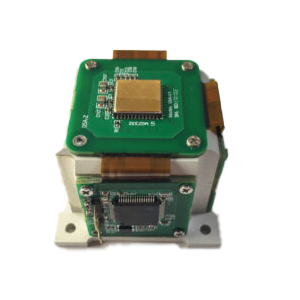 North-Seeking MEMS IMU
North-Seeking MEMS IMU